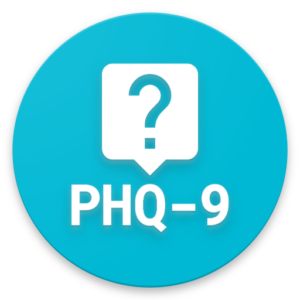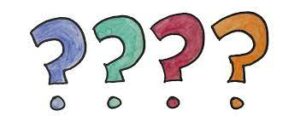Depression is a serious mental illness that can lead to suicide if left untreated. It is important for business owners to be able to identify the signs of depression in their employees, in order to provide them with the necessary help and support. PHQ-9 is a screening test that can help business owners do just that. This blog post will give you a brief overview of what PHQ-9 is, and how it can help you assess the mental health of your employees.
Contents
What Is PHQ9?
 PHQ9 is described as a “depression screening tool.” It is a self-report measure that assesses an individual’s current level of depression symptoms, as well as their severity. The PHQ-9 stands for Patient Health Questionnaire-Depression Scale. The depression scale consists of nine questions, each of which is answered on a four-point scale ranging from “not at all” to “nearly every day.”
PHQ9 is described as a “depression screening tool.” It is a self-report measure that assesses an individual’s current level of depression symptoms, as well as their severity. The PHQ-9 stands for Patient Health Questionnaire-Depression Scale. The depression scale consists of nine questions, each of which is answered on a four-point scale ranging from “not at all” to “nearly every day.”
The PHQ-Nine is used as both a screening tool and a diagnostic tool. When used as a screening tool, the PHQ-9 can help identify individuals who may be experiencing depression. And who would benefit from further evaluation? When used as a diagnostic tool, the PHQ- Nine can help confirm a diagnosis of depression.
The PHQ-Nine is considered to be a reliable and valid measure of depression. If you are concerned that you or someone you know may be experiencing depression, the PHQ-Nine is a good place to start.
How Is The PHQ-9 Used?
The PHQ-9 is used by health care providers to screen for and diagnose depression. It can also be used to monitor an individual’s response to treatment. This is a self-report measure, which means that the individual completes the questionnaire themselves. The PHQ-9 is a similar depression screening tool that is completed by a health care provider.
This tool can also be used to measure the severity of an individual’s depression symptoms. It is believed that a professional can get a more accurate picture of an individual’s depression symptoms when they complete the PHQ-9.
The PHQ-9 is also used to assess an individual’s risk for suicide. This is because some of the questions on the PHQ-9 specifically ask about suicidal ideation and behaviors. So, all in all, this PHQ9 is believed to be a helpful tool in order to better understand an individual’s mental health.
How Does It Work?
To identify depression, the PHQ-9 will ask you about your mood over the last two weeks. It’s a series of nine questions, each one asking how often you’ve experienced certain symptoms. Let’s discuss these questions in more detail.
Questions
 The first question is, “Over the last two weeks, how often have you been bothered by feeling down, depressed or hopeless?” The options to choose from are: “Not at all,” “Several days,” “More than half the days,” and “Nearly every day.”
The first question is, “Over the last two weeks, how often have you been bothered by feeling down, depressed or hopeless?” The options to choose from are: “Not at all,” “Several days,” “More than half the days,” and “Nearly every day.”
The second question is about irritability. It asks, “Over the last two weeks, how often have you been bothered by having little interest or pleasure in doing things?” Again, the options are: “Not at all,” “Several days,” “More than half the days,” and “Nearly every day.”
The next question is about sleep. It asks, “Over the last two weeks, how often have you been bothered by having trouble falling or staying asleep, or sleeping too much?” The options to choose from are: “Not at all,” “Several days,” “More than half the days,” and “Nearly every day.”
The fourth question is about fatigue. For instance, if you’ve been more tired than usual or had little energy. It asks, “Over the last two weeks, how often have you been bothered by feeling tired or having little energy?” The options are: “Not at all,” “Several days,” “More than half the days,” and “Nearly every day.”
The fifth question is about changes in appetite. It asks, “Over the last two weeks, how often have you been bothered by poor appetite or overeating?” The options are: “Not at all,” “Several days,” “More than half the days,” and “Nearly every day.”
The sixth question is about concentration. For example, if it’s been hard to make decisions or you’re easily distracted. It asks, “Over the last two weeks, how often have you been bothered by feeling bad about yourself – or that you are a failure? Or have let yourself or your family down?” The options are: “Not at all,” “Several days,” “More than half the days,” and “Nearly every day.”
The next question is about restlessness. It asks, “Over the last two weeks, how often have you been bothered by feeling restless or fidgety?” The options are: “Not at all,” “Several days,” “More than half the days,” and “Nearly every day.”
The eighth question is about feeling like you’re in danger. For example, if you’ve been worried that something bad might happen to you or someone close to you. It asks, “Over the last two weeks, how often have you been bothered by feeling scared, panicked, or anxious?” The options are: “Not at all,” “Several days,” “More than half the days,” and “Nearly every day.”
The last question is about thoughts of death or suicide. It asks, “Over the last two weeks, how often have you been bothered by thoughts that you would be better off dead or of hurting yourself in some way?” The options are: “Not at all,” “Several days,” “More than half the days,” and “Nearly every day.”
Scores
After you answer these questions, your doctor will total up your score. The scoring goes as follows:
0-13 points – don’t have depression,
14-19 points – have mild depression,
20-28 points – moderate depression, and
29-63 points – you have severe depression.
The scores are calculated by taking the number of days that you’ve experienced certain symptoms. And multiplying them by the weight of each symptom. For example, if you’ve been feeling down for two weeks and it bothers you most days, that would be a score of six.
If your total score is between five and nine, your doctor may want to keep an eye on you and see if your symptoms improve. If your score is ten or above, your doctor will likely want to start treatment right away.
So this tool works by helping doctors to know how severe your depression is and what kind of treatment you may need. PHQ9 is a valuable screening tool, but keep in mind that it’s not perfect. If you think you may be depressed, talk to a mental health professional for an accurate diagnosis.
What To Do After PHQ9 Test?
 When you have completed the PHQ-9 test, it is important to follow up with your doctor to discuss the results. The test is not meant to diagnose depression, but rather to screen for symptoms. If you have a high score, it does not necessarily mean that you are depressed.
When you have completed the PHQ-9 test, it is important to follow up with your doctor to discuss the results. The test is not meant to diagnose depression, but rather to screen for symptoms. If you have a high score, it does not necessarily mean that you are depressed.
However, it is important to discuss your score with a professional in order to rule out any potential underlying causes. After PHQ9, your doctor may recommend additional tests or refer you to a mental health specialist for an evaluation.
For example, if you are experiencing symptoms of anxiety or insomnia. A professional may want to rule out other potential causes before making a diagnosis of depression. In this case, the PHQ-9 test may be administered. The goal of treatment is to reduce your symptoms and help you function better in your everyday life.
A complete treatment plan is required for the diagnosis of depression and may include medication, psychotherapy, or a combination of both. If you are experiencing any suicidal thoughts, it is important to seek help immediately by calling a suicide hotline in your area. Your doctor can also provide you with resources and referrals to mental health services if needed.
Other Diagnostic Criteria For Depression
There are other diagnostic criteria for depression that your doctor may consider in addition to the PHQ-9. These include:
- Beck depression inventory (BDI)
It is a 21-question multiple-choice self-report inventory, one of the most widely used instruments for measuring the severity of depression.
- Zung Self-Rating Depression Scale
This is a 20-item self-report scale that measures the cognitive, somatic, and affective symptoms of depression.
- Hamilton Rating Scale for Depression (HRSD)
It is a 17-item observer-rated scale that measures the severity of a person’s depression.
- Geriatric Depression Scale (GDS)
It is a 30-item self-report scale that is specifically designed to screen for depression in older adults.
These options are just a few of the many available. If you think you may be depressed, speak to your doctor about which screening test is right for you.
Depression is a serious mental illness that can have a profound effect on every aspect of your life. If you think you may be depressed, don’t hesitate to reach out for help. There are many resources available to you, and with the right treatment, you can start feeling better.
Conclusion
In conclusion, the PHQ-9 is a very important tool in helping to screen for depression. This test is quick, easy to administer, and can give you a good idea of whether someone is suffering from depression. If you think that someone you know may be depressed, make sure to have them take the PHQ-9.
But, it is important to remember, however, that this test is not a diagnosis. It still needs to be interpreted by a professional in order to make an accurate diagnosis. But, it can be a very valuable first step in getting help for depression.
If you are interested in learning more about the PHQ-9, you can contact Therapy Mantra. The team of expert mental health professionals provides the best quality psychological treatment. Our services are globally at affordable rates with maximum confidentiality. Contact us today to learn more about our services. You can also book an online therapy session or download our free Android or iOS app.


